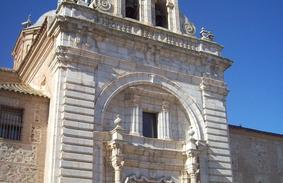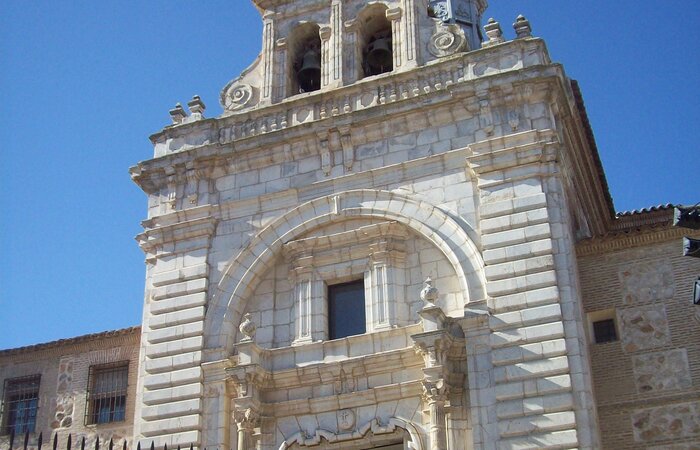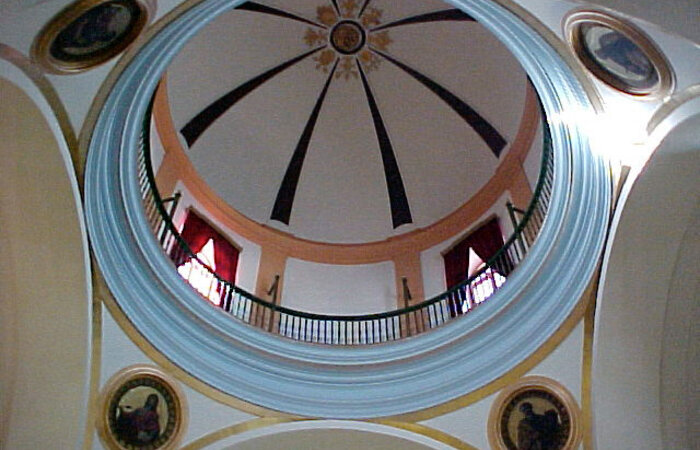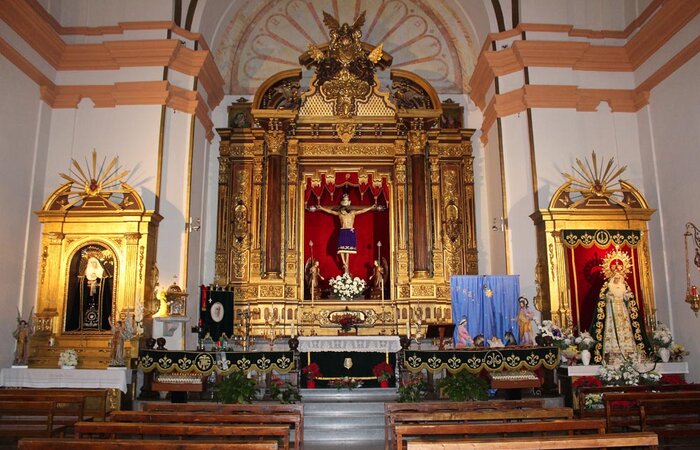Curiosities

Did you know that this hermitage was financed and erected in part, thanks to the organization of several bullfights? In addition, the patron saint image is singular. With a very dark complexion, the statue got no beard (infrequent in the figures of Christ) and the hair that adorns it is natural, donated by local people.
MONUMENT
Ermita del Santísimo Cristo de la Vera Cruz
This church has an extraordinary architectonical singularity. Inside, you can find the statue of Consuegra’ s patron. The church has a large entrance and highlights its dome crowned by a lantern recognizable from anywhere in the city, becoming a reference of the skyline. Very close to it are the pedestrian access stairs to the mills.
It was built in the 18th century, its façade combines two architectural styles. On one hand, the naves are made of stone huts with brick-lined walls, this castilian-mudéjar style that is repeated in other buildings of Consuegra. The most striking thing is the white marble façade, built in a late baroque style with neoclassical elements, it has stairs that save the slope with the atrium and a magnificent door flanked by two spiral columns richly decorated. On the lintel you can see the shroud of Christ. The façade continues with marble cushion that ends in the bell tower softened with two scrolls on its sides.
The dome is on pendentives that develops a drum and is topped with a lantern. The convergence between the sobriety of the typical Castilian style and the intention to provide the church with a marked solemnity and differentiation with the rest (for being the temple that guards the saint patron statue) makes it a religious building of great singularity, atypical and special in comparison with the churches that can be found in the region.


This institution has a museum whose collections are stored by the Governing Board of the Holy Christ of the Vera Cruz, from the construction of the hermitage, until today. In its collections, we can highlight the textile heritage (especially in clothing and liturgical accessories), as well as a Lignum Crucis (relic of the cross where Christ died); a wooden carving of Jesus child; or Sacred vessels of different centuries.
One of the most important pieces that can be visited in this Museum is the painting by San Ramón Nonato, a work that was part of the exhibition on Corpus Christi organized by the Archbishopric of Toledo.
https://fundacionsantisimocristoveracruz.blogspot.com/
